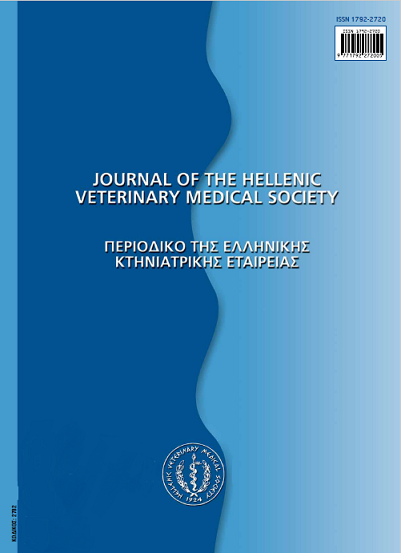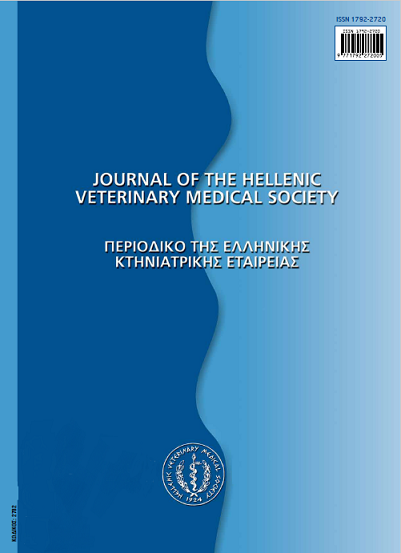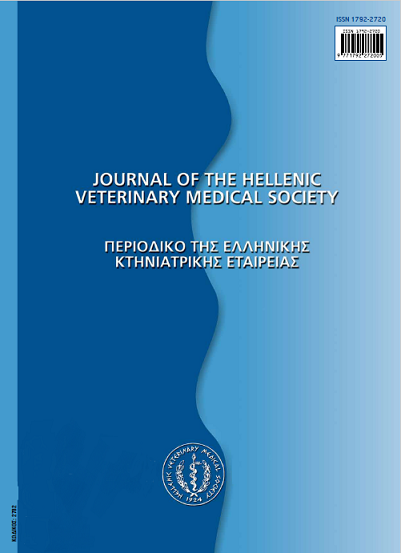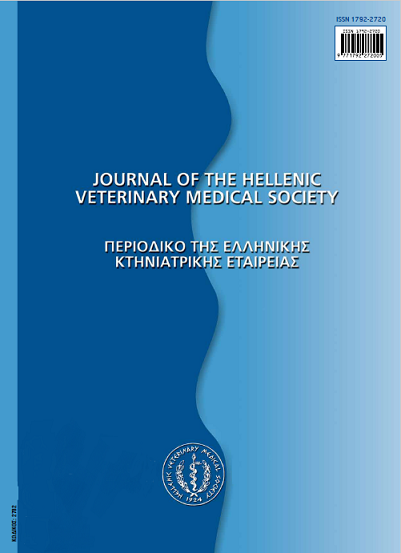Clinical characteristics of lameness and potential risk factors in intensive and semi-intensive dairy sheep flocks in Greece
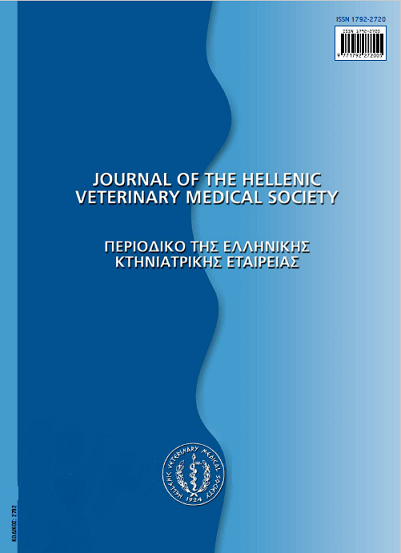
Abstract
Objectives of the study were to present descriptive epidemiological characteristics of lameness in intensively and semi-intensively reared flocks of Chios-breed dairy sheep in Greece, as well as to identify potential factors that may affect development, severity and duration of the disorder. In total, 1618 ewes in nine flocks were used for assessment of locomotion score and detailed clinical examination, which were performed fortnightly throughout a milking period. Subsequently, two logistic regression models were employed to assess impact of various variables on occurrence and severity of lameness. Mean lameness incidence in the nine flocks under surveillance during the milking period was 6.8% (110 cases in 1618 ewes); between flocks range of the incidence was 0.4%-22.0%. In 48% of the cases, lameness was considered to be severe. Foot-rot was found to be the commonest lameness-causing disorder, accounting for 66% of all cases. During the investigation, incidence of lameness in relation to the causing factor was 4.5% for foot-rot, 1% for white line abscesses, 1% for white line disease, <0.5% for pedal joint abscesses and <0.5% for hoof injuries. Farm size, stocking density, parity of the ewes and lambing season were identified as significant risk factors for dairy sheep lameness occurrence. Finally, stocking density was also found to affect lameness severity.
Article Details
- How to Cite
-
GELASAKIS (Α.Ι. ΓΕΛΑΣΑΚΗΣ) A. I., OIKONOMOU (Γ. ΟΙΚΟΝΟΜΟΥ) G., BICALHO, R. C., VALERGAKIS (Γ.Ε. ΒΑΛΕΡΓΑΚΗΣ) G. E., FTHENAKIS (Γ.Χ. ΦΘΕΝΑΚΗΣ) G. S., & ARSENOS (Γ. ΑΡΣΕΝΟΣ) G. (2017). Clinical characteristics of lameness and potential risk factors in intensive and semi-intensive dairy sheep flocks in Greece. Journal of the Hellenic Veterinary Medical Society, 64(2), 123–130. https://doi.org/10.12681/jhvms.15485
- Issue
- Vol. 64 No. 2 (2013)
- Section
- Research Articles
Authors who publish with this journal agree to the following terms:
· Authors retain copyright and grant the journal right of first publication with the work simultaneously licensed under a Creative Commons Attribution Non-Commercial License that allows others to share the work with an acknowledgement of the work's authorship and initial publication in this journal.
· Authors are able to enter into separate, additional contractual arrangements for the non-exclusive distribution of the journal's published version of the work (e.g. post it to an institutional repository or publish it in a book), with an acknowledgement of its initial publication in this journal.
· Authors are permitted and encouraged to post their work online (preferably in institutional repositories or on their website) prior to and during the submission process, as it can lead to productive exchanges, as well as earlier and greater citation of published work.



